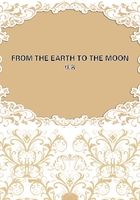
第97章
At six in the evening the projectile passed the south pole at less than forty miles off, a distance equal to that already reached at the north pole. The elliptical curve was being rigidly carried out.
At this moment the travelers once more entered the blessed rays of the sun. They saw once more those stars which move slowly from east to west. The radiant orb was saluted by a triple hurrah.
With its light it also sent heat, which soon pierced the metal walls.
The glass resumed its accustomed appearance. The layers of ice melted as if by enchantment; and immediately, for economy's sake, the gas was put out, the air apparatus alone consuming its usual quantity.
"Ah!" said Nicholl, "these rays of heat are good. With what impatience must the Selenites wait the reappearance of the orb of day.""Yes," replied Michel Ardan, "imbibing as it were the brilliant ether, light and heat, all life is contained in them."At this moment the bottom of the projectile deviated somewhat from the lunar surface, in order to follow the slightly lengthened elliptical orbit. From this point, had the earth been at the full, Barbicane and his companions could have seen it, but immersed in the sun's irradiation she was quite invisible. Another spectacle attracted their attention, that of the southern part of the moon, brought by the glasses to within 450 yards. They did not again leave the scuttles, and noted every detail of this fantastical continent.
Mounts Doerful and Leibnitz formed two separate groups very near the south pole. The first group extended from the pole to the eighty-fourth parallel, on the eastern part of the orb; the second occupied the eastern border, extending from the 65@ of latitude to the pole.
On their capriciously formed ridge appeared dazzling sheets, as mentioned by Pere Secchi. With more certainty than the illustrious Roman astronomer, Barbicane was enabled to recognize their nature.
"They are snow," he exclaimed.
"Snow?" repeated Nicholl.
"Yes, Nicholl, snow; the surface of which is deeply frozen.
See how they reflect the luminous rays. Cooled lava would never give out such intense reflection. There must then be water, there must be air on the moon. As little as you please, but the fact can no longer be contested." No, it could not be. And if ever Barbicane should see the earth again, his notes will bear witness to this great fact in his selenographic observations.
These mountains of Doerful and Leibnitz rose in the midst of plains of a medium extent, which were bounded by an indefinite succession of circles and annular ramparts. These two chains are the only ones met with in this region of circles.
Comparatively but slightly marked, they throw up here and there some sharp points, the highest summit of which attains an altitude of 24,600 feet.
But the projectile was high above all this landscape, and the projections disappeared in the intense brilliancy of the disc.
And to the eyes of the travelers there reappeared that original aspect of the lunar landscapes, raw in tone, without gradation of colors, and without degrees of shadow, roughly black and white, from the want of diffusion of light.
But the sight of this desolate world did not fail to captivate them by its very strangeness. They were moving over this region as if they had been borne on the breath of some storm, watching heights defile under their feet, piercing the cavities with their eyes, going down into the rifts, climbing the ramparts, sounding these mysterious holes, and leveling all cracks. But no trace of vegetation, no appearance of cities; nothing but stratification, beds of lava, overflowings polished like immense mirrors, reflecting the sun's rays with overpowering brilliancy.
Nothing belonging to a _living_ world-- everything to a dead world, where avalanches, rolling from the summits of the mountains, would disperse noiselessly at the bottom of the abyss, retaining the motion, but wanting the sound. In any case it was the image of death, without its being possible even to say that life had ever existed there.
Michel Ardan, however, thought he recognized a heap of ruins, to which he drew Barbicane's attention. It was about the 80th parallel, in 30@ longitude. This heap of stones, rather regularly placed, represented a vast fortress, overlooking a long rift, which in former days had served as a bed to the rivers of prehistorical times. Not far from that, rose to a height of 17,400 feet the annular mountain of Short, equal to the Asiatic Caucasus. Michel Ardan, with his accustomed ardor, maintained "the evidences" of his fortress. Beneath it he discerned the dismantled ramparts of a town; here the still intact arch of a portico, there two or three columns lying under their base; farther on, a succession of arches which must have supported the conduit of an aqueduct; in another part the sunken pillars of a gigantic bridge, run into the thickest parts of the rift. He distinguished all this, but with so much imagination in his glance, and through glasses so fantastical, that we must mistrust his observation. But who could affirm, who would dare to say, that the amiable fellow did not really see that which his two companions would not see?
Moments were too precious to be sacrificed in idle discussion.
The selenite city, whether imaginary or not, had already disappeared afar off. The distance of the projectile from the lunar disc was on the increase, and the details of the soil were being lost in a confused jumble. The reliefs, the circles, the craters, and the plains alone remained, and still showed their boundary lines distinctly. At this moment, to the left, lay extended one of the finest circles of lunar orography, one of the curiosities of this continent. It was Newton, which Barbicane recognized without trouble, by referring to the _Mappa Selenographica_.